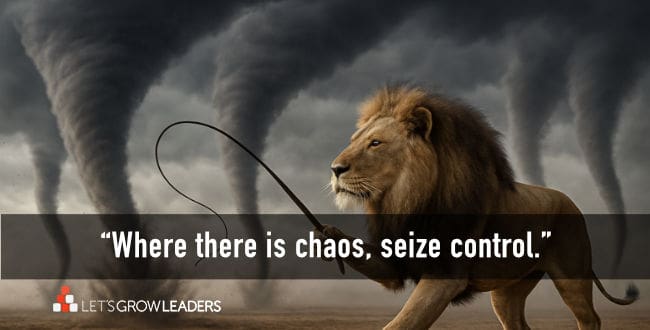A Practical, Strategic Communication Tool For Project Managers
Whether you’re a PMI certified project manager working to spearhead several large-scale projects, or a manager balancing a critical project while still doing your day job, you know the importance of communication.
And yet, people typically don’t communicate well. Especially not about risk; about the myriad ways their best-laid plans could implode. And when their plans do implode, and negative emotions kick in? Their communication gets progressively worse.
What does this mean for you, as a project manager? It means that in your efforts to get a struggling project back on track, the deck is stacked against you. The very thing you need—open, fluid communication among your stakeholders—is likely to be the one thing you won’t get. Communication takes time to rebuild once it’s broken down. You know the schedule you’re always up against. You don’t have that kind of time.
57% OF PROJECTS FAIL DUE TO BREAKDOWNS IN COMMUNICATION. –IT Cortex
The best solution for you is to prevent your project from veering off track in the first place. To do that, you’ll need to consistently and ruthlessly seek out understanding of the risks your project faces.
An Easy Project Manager Communication Tool
A significant part of our work is supporting project leaders and teams to ‘own the ugly’ around what could prevent their teams from meeting project goals. Technology is progressing faster (and workplace culture is changing faster) than at any other point in human history. Your most important work as a project manager is to be aware of when you’re lagging behind, so you can take steps to immediately redirect and get your initiative’s efforts back on course.
To launch and guide candid, “ugly” conversations about the ways your project could be at risk, you can use the “Own the Ugly” Communication Tool inspired by our best-selling book Winning Well A Manager’s Guide to Getting Results Without Losing Your Soul:
 U- What are we Underestimating?
U- What are we Underestimating?
Typically, the element of project management that’s most often underestimated is communication. You and your stakeholders understand the technical and operational risks to your project. You’ve taken steps to mitigate those risks. But you can understand risk and still underestimate the impact of failure on people.
When a project begins to veer off course—when deadlines are missed and deliverables don’t produce desired results — communication breaks down. Poor communication increases the risk of your project’s failure exponentially.
Consider, are you underestimating that?
Ask yourself how can you shore up your communication channels now, before your actual encounter with any of the dozens of elements that can take your project down. Where do you need to pay closer attention to how people talk to one another? The tone of your team’s day-to-day conversations is a good indicator of the strength of their relationships. People who are in strong relationships are more likely to keep communicating under pressure.
Create space for contributors to your project to dig in and identify exactly where communication will break down first—how, why, and between whom—if goals start to be missed. In having this conversation, you’ll learn a tremendous amount about your stakeholders. You’ll discover where they are already struggling to communicate effectively with one another and, possibly, with you.
G- What’s Got to Go?
As a project manager, you know better than anyone, to succeed, projects must be agile. Conditions change, and the things that you’re doing now may not make sense anymore.
Ask your team, “Which of our processes are more habit than value? What meetings are wasting your time? What’s simply gotta go for you to have the time, energy, and resources to focus on what matters most to this project’s desired outcomes?”
Ask these questions now. Be fierce about purging the policies and norms that are keeping your contributors in a holding pattern. Facilitating agility is more often about subtraction than addition.
L- Where are We Losing?
Mapping out a project management strategy and following through on your plans can be a monumental effort. But what happens when you and your contributors do everything ‘right’ and still fail to make strides in meeting your project’s initial goals?
Well, then it’s time for the gloves to come off—all the way off.
Ask, “Where are you under-performing despite your best efforts, and why? Who is doing it better, and how? And, most importantly, what systems and partnerships must evolve to support your effort?”
Leading projects within a rapidly shifting business environment isn’t easy. It’s hard. Be proactive in discovering why you’re not effective. Set yourself apart from other project teams that are waiting for change to happen to them, instead of because of them.
Y- Where are We Missing the Yes?
Beyond your project’s scope lies a universe of possibility. As project manager, you know this. That’s why you keep a sharp eye on scope creep. To meet your project’s budget, timeline, and promised outcomes, you must ensure promises don’t outstrip resources.
And yet. Is the mindset to prevent scope creep holding you back from effectively assessing creative options? Are there partnerships, research, or tangential efforts that, while not strictly within your project’s parameters, could deepen your team’s results?
Every now and then, remind yourself and your team that it’s okay to remove the blinders and explore counterintuitive options. Cultivate that curiosity. And, have the uncomfortable conversations about the ways curiosity isn’t cultivated within your project and the impact of that absence.

Remember—you’re going to need innovative solutions should your project’s risks ever become reality.
Won’t you join us? Are you a Europe-based Project Manager? We would love to have you join us for our session at the PMI EMEA Congress in Berlin. Click here for more information.
Download this Project Article to Share with Your Project Manager Colleagues
Would you like a printable version of this article? Click here.







A happy crew is a productive crew.